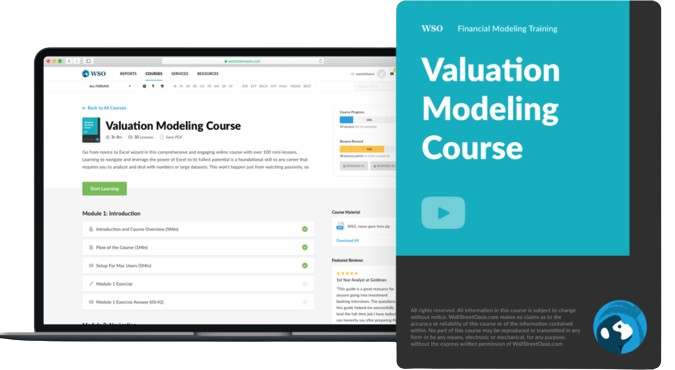Earnings Management
Practics of using accounting techniques to manipulate financial statements, particularly earnings, to make them appear excessively better
What is Earnings Management?
Earnings management uses accounting techniques to manipulate financial statements, particularly earnings, to make them appear excessively better.
The critical role of this management technique is to take advantage of the accounting principles and rules to make income appear more consistent (also known as income smoothing) and to create constant profits over different periods or quarters.
If a firm experiences financial struggles or is performing poorly in a specific period, this is where this management technique can be used to conceal (or at least improve) such information to create stronger financial reports.
However, this is not the only purpose. There are other various reasons why management uses this technique, which we'll discuss later in the article.
Key Takeaways
- Earnings management involves the use of accounting techniques to manipulate financial statements, especially earnings, to present them in a more favorable light.
- Earnings management is generally legal as long as it adheres to Generally Accepted Accounting Principles (GAAP).
- Primary motives include portraying positive company images, maximizing executive incentives, increasing stakeholder wealth, and aligning with analysts' forecasts for stock value.
- Earnings management serves purposes such as achieving internal targets, smoothing income for stability, meeting external expectations, and ensuring favorable investor and analyst perceptions.
Detecting Earnings Management
In the financial statements, earnings are usually represented as the "net income," which appears in the income or profit and loss statement. A common question frequently asked is: How do you detect it in financial statements?
The answer is in the footnotes of the organization's financial statements. Reading and analyzing the footnotes can unveil the accounting policy changes manipulated by the organization.
There are several indications when a company is practicing this manipulation technique.
- One of the signs comes from the company's declaration of its revenue increase without corresponding increases in its cash flow.
- Another indication can be an increase in income in the final quarter of the year, potentially presenting a positive year-end financial outlook.
- When the life of the fixed assets is expanding, this might also signify this management technique taking place.
- Additionally, an indication may occur when an asset's value is inflated without adhering to the expected or standard depreciation schedule.
Is Earnings Management Illegal?
Another question that is commonly asked is: Is it legal for companies to practice this management technique?
Generally, yes, but the legality of earnings management can depend on various factors, including the intent and extent of manipulation.
As long as the accounting choices fall under GAAP or Generally Accepted Accounting Principles, then it is perfectly fine. To people unfamiliar with this term, it is a set of accounting rules and standards that includes the definitions of concepts, principles, and industry-specific rules.
Earnings management is important for companies because it reduces fluctuations in earnings, maximizes profits, and keeps the value of their stock high.
Usually, after a company publishes its earnings, the stock price will rise and fall depending on whether the result meets the analyst's expectations.
Therefore, it is important for management to use accounting practices to manipulate the result to meet financial expectations and keep the stock price relatively high.
Motives of Earnings Management
The primary motive of this manipulation technique is to make stakeholders feel that the company is performing well. The motive is to present accurate financial information, aligning with stakeholders' expectations of the company's performance.
When income is high, executives of the companies are normally rewarded with incentives and bonuses, which encourage them to maintain high levels of income.
Also, earnings management increases the overall wealth of the stakeholders, such as the owners. For this to occur, management aligns analysts' forecasts to meet present and future periods.
As such, the benefit leads to the appreciation of the stock, which will enhance the overall wealth of the owners or stakeholders of the company. On the other hand, if the company fails to meet analysts' expectations, it may result in a reduction in stock value, impacting the overall wealth of owners/stakeholders.
Other motives include stock market incentives, internal motives, concealing or signaling hidden information, etc.
Purpose of Earnings Management
There are various reasons why many companies adopt this management technique. The primary purposes include window dressing, achieving internal targets, income smoothing, and meeting external expectations.
Let's take a look at some of them below:
- Internal targets: Another reason earnings management is used is to achieve the internal targets set by the company. Managers often utilize this technique to achieve internal targets such as income expectations or departmental budgets. This way, they can achieve and realize the incentives set by the company.
- Income smoothing: It balances fluctuations or volatility in net income from one reporting period to another. Companies often use accounting techniques to smooth out fluctuations and achieve continuous growth patterns, creating the appearance of stable incomes.
- Meeting external expectations: This occurs when companies strive to match or surpass profit estimates or forecasts they have previously made. Investors will expect the amount of profit to be similar to or greater than the figure projected by the company.
Note
Management will likely shift the revenue from one accounting period to another to meet investors' expectations. With earnings management, the company can utilize accounting policies to manipulate financial reports.
Earnings Management Approaches
There are many techniques or approaches for this. Some of them are:
1. One-time charges
One-time charges usually involve significant expenses, such as writing off costs from a failed project in the financial report.
This technique involves allocating the charges or expenses to periods where income is relatively high. It typically occurs when companies can manage the impact due to strong performances in that period.
Likewise, if a company might incur big one-time charges in the current period, it might take advantage of allocating future expenses to that period as well, which is known as "The Big Bath."
Therefore, companies may incur significant charges in the current period to enhance the appearance of profitability in future periods.
2. Cookie jar reserves
Cookie jar reserves are another technique when companies set reserves in the previous quarter to use in periods where profits are relatively low.
This technique can deceive investors by making a company's earnings seem consistent. Likewise, it will mislead investors into valuing the stock higher than its actual worth.
This technique can be achieved by overestimating common reserves such as expected legal settlements or bad debts or taking large, once-expected losses from a specific event.
For example, suppose a company overestimates bad debts of $5mil in the previous quarter. In that case, it can use the proportion of the expense to compensate for periods where the company experiences terrible quarters.
3. Revenue and expense recognition
The "Revenue and expense recognition" technique manipulates the dates when revenue or expense is recognized. For example, the company can increase income in the current period by recognizing the revenue of future periods to the current period.
Likewise, if the company wants to decrease expenses in the current period, it can also recognize current expenses in future periods.
The company may transfer extra income from the current period to the next, delaying the revenue recognized in the current period. Similarly, expenses from future periods can be recognized in current periods to make future income appear better.
4. Changing accounting method
The final technique is changing accounting methods. As its name suggests, the method involves using different accounting methods to work what's best for the company.
When changing the accounting method results in income changes, the company is engaging in earnings management.
For example, companies may change accounting methods for inventory depreciation (like using FIFO or LIFO, straight line, or diminishing balance) and switch between cash basis or accrual accounting methods.
Examples of Earnings Management
Imagine a bakery that usually prices its cupcakes based on the cost of ingredients and labor (like the LIFO method). The more recent batches cost a bit more to make, resulting in a higher cost of goods sold.
To boost short-term profits, the bakery decided to change its pricing method. Instead of considering the cost of the latest batches first, they switch to considering the cost of the earlier, less expensive batches first (like the FIFO method).
This leads to lower reported costs and higher profits on paper, making the bakery look more profitable in the short term.
Now, suppose the bakery has a policy of immediately counting all equipment purchases as expenses if they cost less than $500. However, they decided to change the policy to make the books look better.
The new policy states that any equipment purchased under $1,000 can be recorded as assets, meaning their cost is spread out over time rather than immediately expensed.
This change lowers immediate expenses, making the bakery's profits seem higher in the short run, even though it's just a paper gain because the costs are still there.
In both examples, the bakery manipulates its financial presentation to show higher profits in the short term, but these changes may not reflect the true health of the business.
Just like in the earlier examples, such practices can raise concerns about transparency and the accuracy of financial reporting.










or Want to Sign up with your social account?